Orchard Valley Gathering #3: Outside-In, Inside-Out
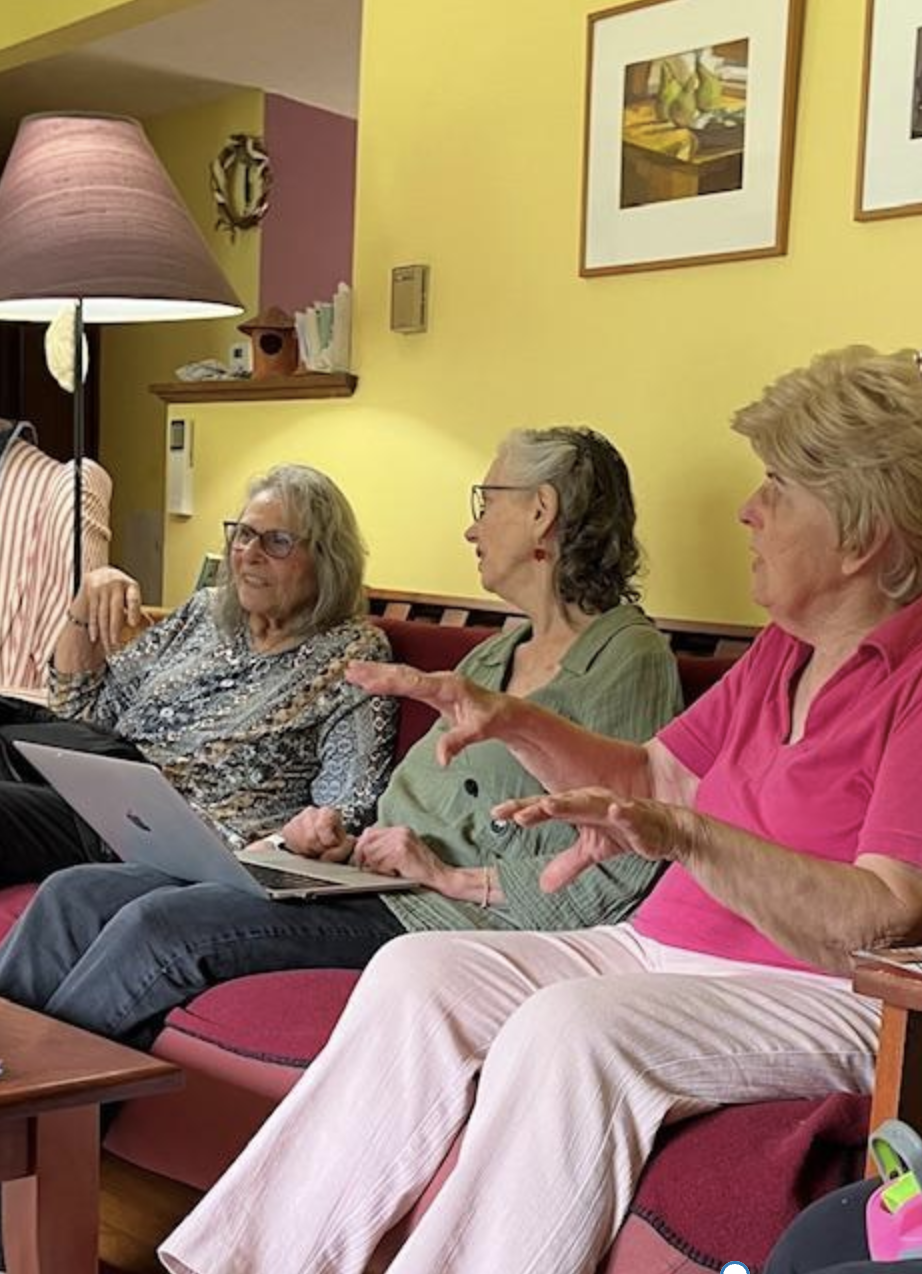
Sharing stories at the third Orchard Valley meetup. L-R: Barbara Slovin, Darcy DuMont, Phyllis Lehrer. Photo; Hetty Startup
Amherst History, Month by Month
This is the third in a series about the Orchard Valley neighborhood in South Amherst. Read Part 1 here and Part 2 here.. We envisioned these planned summer get-togethers, as outdoor meetings. But the day we met a rainstorm threatened so Darcy Dumont hosted us in her living room. This suited a smaller group and it was easy to share each others’ photo albums. There was also more time for each resident to share memories of their first years in Orchard Valley.
Alice Swift remembered that they came from Madison, Wisconsin in 1966, just after a year-long sojourn in Cambridge, United Kingdom. One of her photos shows their new house, still with its “For Sale” sign. Similar but smaller houses were for sale in Echo Hill South at that time.
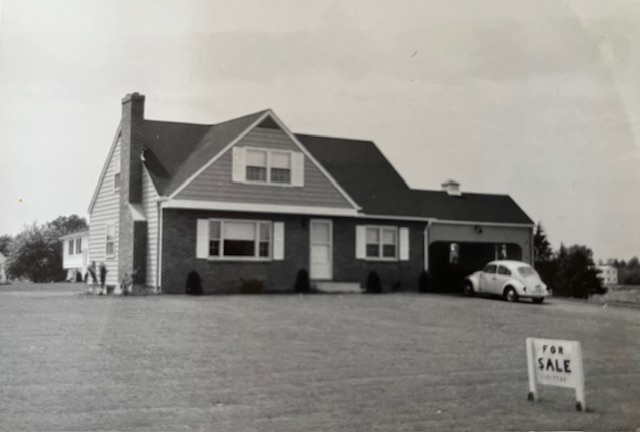
Phyllis Lehrer, who writes a column for the Amherst Bulletin, came to Orchard Valley from Ann Arbor, Michigan, pregnant and with two small children in tow.
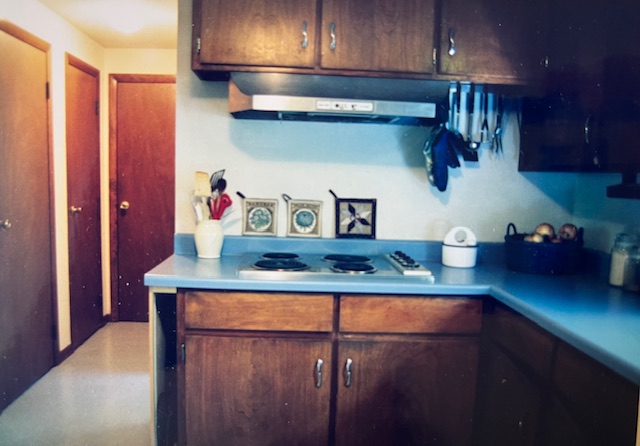
Barbara Slovin, who arrived a little later, in 1971, from State College, Pennsylvania, came with three sons and two cats “in the yard” (like the Crosby, Stills, Nash and Young song), joining about 11 other households already on her street. Like many other long-time Orchard Valley residents, she came from America’s heartland as a faculty wife whose husband taught at UMass Amherst. With no fences demarcating each property, along with very little landscaping, it was possible for these women to watch their kids head off to school. And the development’s children always had large swathes of grass to play in.
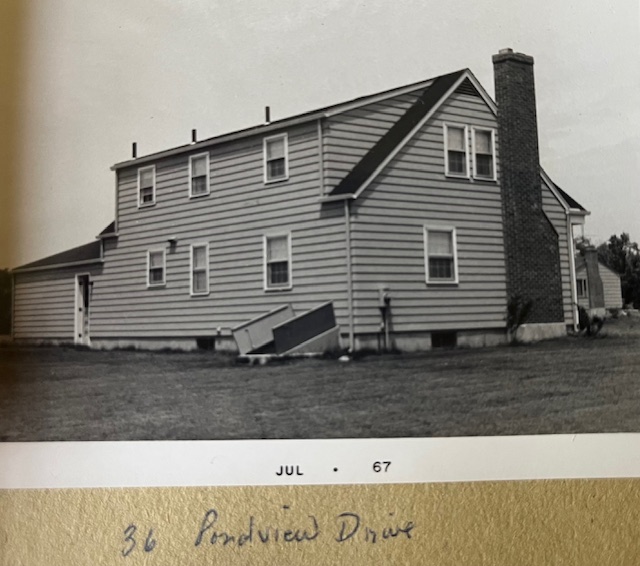
Other communal features of the development included Markerts Pond, a landscape feature named for the farm families who had grown apples here for generations.
Several people remember the impromptu plays that were put on for the community; one person recalled that there was some seasonal fundraising for various causes, such as putting an end to muscular dystrophy. In the summertime, there were neighborhood get-togethers like volleyball and softball games, (mostly men against kids), as well as cook-outs and picnics for July 4 and Martin Luther King day at an extra-large lot owned by the Ackerman family and popularly known as “The Field.” In the winter, residents groomed the pond for ice skating. Trick-or treating on Halloween was ubiquitous in the neighborhood from its earliest days to the present time .
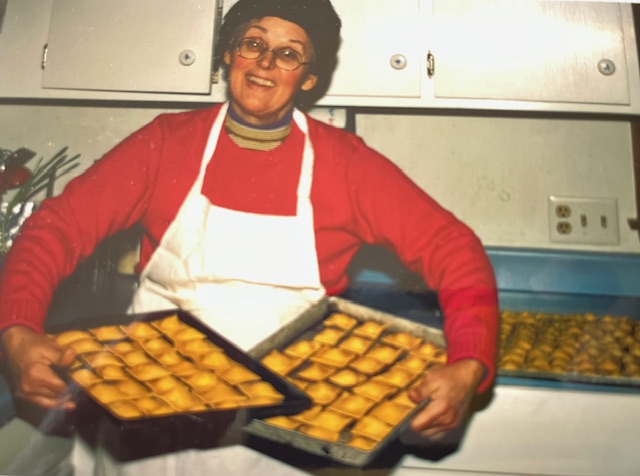
But outside fun and games was not always possible and I did treasure finding an out-of-focus picture of one of Alice Swift’s children that clearly shows that it was not just the grown ups who appreciated the fitted kitchens with built in ovens, dishwashers and more – the same cupboards became the best play spaces for small children.
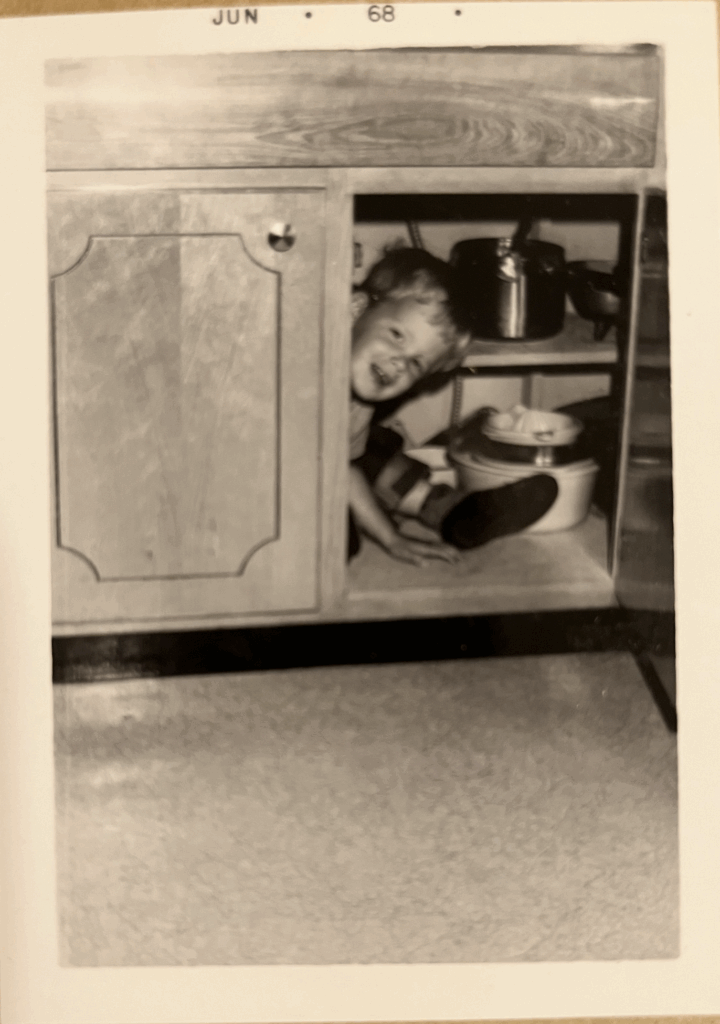
It has remained the case that most or all of the houses in Orchard Valley have large yards, sometimes as much as an acre and a half, so there was room for vegetable gardens. This meant that families could share their homegrown produce. One resident stated, “Even though the soil wasn’t great, it seemed to produce wagonloads of zucchini.” Over time, soil amendments and residents’ hard work have made the yards and streetscape alive with flowers, trees, and other plantings. Both Swift and neighbor Adrienne Terrizzi still have productive vegetable gardens.
Joan and Munroe Rabin and their family came in around 1972 from Berkeley, staying in an apartment at the Townehouse Apartments of Amherst until moving to Orchard Valley’s Atwater Circle, one of several cul-de-sacs in the development. Barbara Slovin said that at one time there were about 26 kids on her cul-de-sac.
There was a subtle transition in the neighborhood when the children of the early residents hit school age. They all went to Crocker Farm Elementary School, which opened in 1966. At this point, some women began looking for work outside the home, paid or unpaid, part-time or full-time. For Swift, this led to an abiding interest in international education that started with volunteer work. Other women mentioned that they got involved in the Scouts, or the Parent Council at Crocker Farm, the Munson Library, South Church, St. Brigid’s or with the Amherst chapter of the League of Women Voters. All of these activities drew women closer to the world of paid employment. Rosemary Kofler’s experience with the job market came via her nursing training and her time as a LaMaze childbirth instructor, leading to work a little later in a pediatrician’s office. Slovin developed an interest in counseling and enrolled in a Master of Education program (she went on to work at the town’s Senior Center for several decades).
As their children were increasingly busy with school and after-school activities, it became easier to attend evening meetings, some of which involved the League or Town Meeting. Becoming an observer and reporting on what was happening in town (before Town Meetings were recorded and made available to the public by Amherst Media) was also a stepping stone to other kinds of part-time employment. This was the case for Lehrer, who became a reporter for the Amherst Record. Joan Rabin found her way into the new world of academic computing, working at the UMass Academic Computer Center in the Whitmore Administrative Building. Fueling this trend were larger ‘events’ in American culture, such as the publication in 1963 of Betty Friedan’s The Feminine Mystique and the growth of the women’s movement.
I subtitled this piece Outside-In, Inside-Out. It seemed to capture that we have all been on a journey as we met together to talk, and reminisce and reflect on changes over time. The late 60’s and early 70s era were certainly a time of children spending a lot more time outside in each other’s homes, in and out of activities and meet-ups with friends. Some of the earliest residents at Orchard Valley have moved out of their homes to assisted living facilities nearby and I half joked with them that perhaps we needed a follow-up session to wrap up the series. The neighborhood is now much more multi-cultural with people who hail from all parts of the world. And yet the setting of the homes, and the proximity to Amherst Center is still preserved, and appreciated today.
